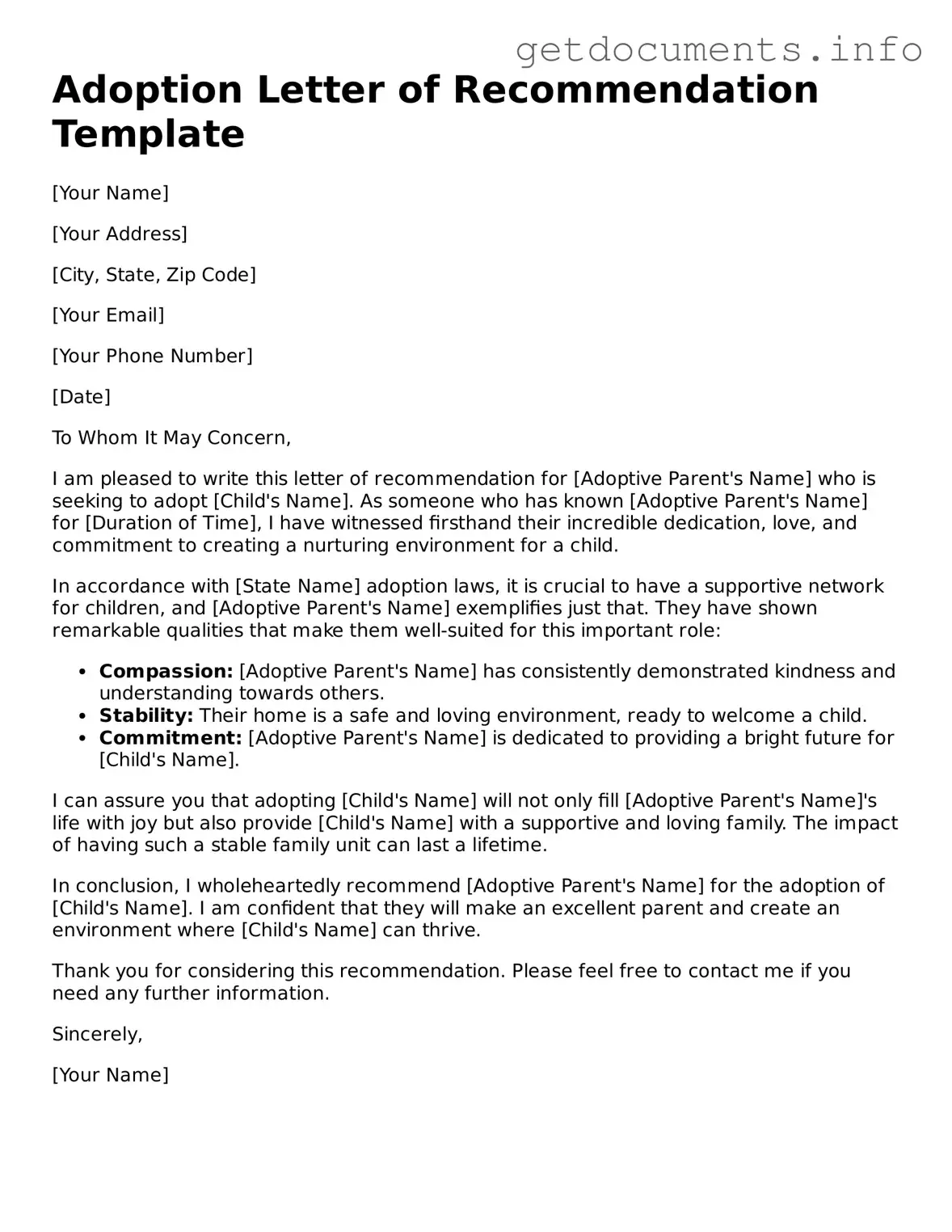Printable Adoption Letter of Recommendation Document
The Adoption Letter of Recommendation form is a crucial document that helps prospective adoptive parents by providing insights into their character and suitability for adoption. This form is typically completed by friends, family, or professionals who know the adoptive parents well, offering a personal perspective on their readiness to welcome a child into their home. To start the process, consider filling out the form by clicking the button below.
Access Adoption Letter of Recommendation Editor
